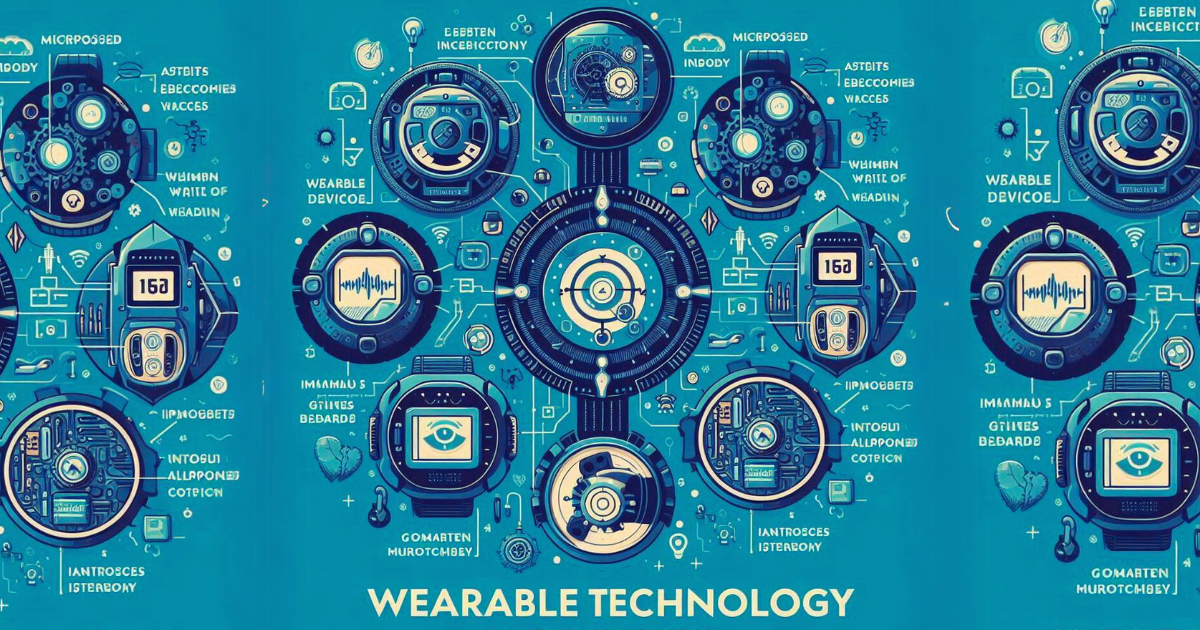What is Wearable Technology?
Wearable technology, commonly referred to as “wearables”, describes a category of electronic devices designed to be worn on the body. These gadgets can be incorporated as accessories, integrated into clothing, implanted within the body, or even tattooed on the skin. Powered by microprocessors and enhanced with internet connectivity, wearable devices can transmit and receive data, making them highly practical and hands-free tools for everyday use.
The Role of Wearables in the Internet of Things (IoT)
Wearable technology has become a critical component of the Internet of Things (IoT), where devices seamlessly communicate with each other via the internet. This rapid adoption has placed wearables at the forefront of innovation, connecting users to their environment in real-time. Whether it’s a smartwatch tracking your fitness levels or a smart patch monitoring vital signs in healthcare, wearables are revolutionizing the way we interact with technology.

Types of Wearable Technology
Wearable devices come in many forms, ranging from simple sensors to highly advanced technologies. Common wearables include smartwatches, fitness trackers, smart glasses, and smart clothing. However, more sophisticated devices, such as AI-powered hearing aids, Google Glass, and Microsoft’s HoloLens, demonstrate the power of wearable computing. For instance, a disposable skin patch in healthcare can wirelessly transmit patient data to healthcare professionals in real-time, showcasing the transformative potential of wearables in critical fields.
Wearable Devices and Data Collection
Most wearable devices are equipped with sensors that analyze and transmit data from close proximity to the wearer’s skin. They monitor vital signs, detect motion, and provide biofeedback. Popular examples include activity trackers, which gather data related to health and fitness, and smart rings or implants that allow seamless communication between devices. In essence, wearables provide real-time data, empowering users to stay informed about their health, environment, and daily activities.
Applications of Wearable Technology
Wearables have a broad range of applications, extending far beyond consumer electronics. While they are most commonly used in fitness, health monitoring, and entertainment, wearable technology is making its way into other sectors. Military applications, for instance, have long benefited from wearables like ‘Smart Shirts’ that monitor soldiers’ health. Additionally, the technology is being integrated into navigation systems, advanced textiles (e-textiles), and healthcare systems, where reliability and security are paramount.
Wearables in Consumer Electronics
In consumer electronics, wearables are often found in the form of smartwatches, fitness trackers, and even smart jewelry. These devices track users’ daily activities, monitor vital signs, and sync data with smartphones or laptops. Since the invention of smartphones, wearable technology has emerged as the next big innovation in the tech world, allowing people to track and manage various aspects of their lives effortlessly.
Potential Privacy Concerns
Although wearables offer tremendous benefits, they also raise concerns about privacy and security. As these devices collect personal data, questions arise about how this information is stored, shared, and protected. With increased connectivity comes a heightened need for secure data management, especially when wearables are integrated into healthcare systems or critical applications.
The Future of Wearable Technology
As the market for wearable technology expands, its applications will continue to grow. The development of wearables for critical industries and everyday use will shape the future, enabling a smarter, more connected world. With innovations like smart glasses, fitness trackers, and AI-driven healthcare devices, the wearable tech industry is expected to play a pivotal role in the evolution of the IoT, healthcare, and consumer electronics.
What is wearable technology?
Wearable technology refers to electronic devices designed to be worn on the body, such as smartwatches, fitness trackers, and smart glasses, that can monitor health, track activities, and connect to the internet.
How does wearable technology work?
Wearables use sensors to collect data about the user’s body and environment. This data is processed by the device or transmitted to a paired smartphone or cloud service for analysis.
Are wearable devices safe to use?
Generally, wearable devices are safe; however, concerns about privacy and data security exist, especially with health-related data. Users should ensure they understand how their data is collected and managed
Conclusion
Wearable technology has already made a significant impact on everyday life, from fitness tracking to healthcare and beyond. As this industry continues to grow, wearables will become more embedded in our daily routines, improving not only personal convenience but also broader areas like health, safety, and productivity. The future of wearables promises to be even more exciting as they evolve to offer more advanced functionalities.
